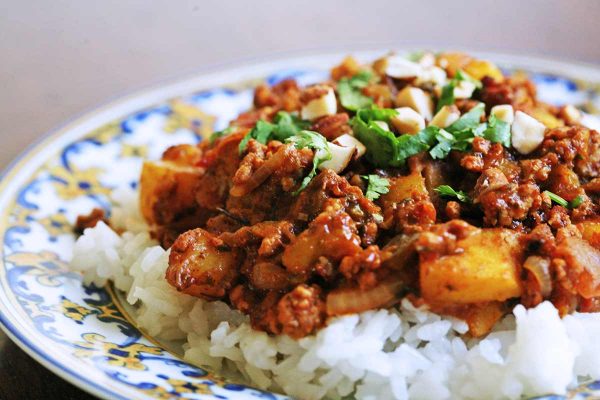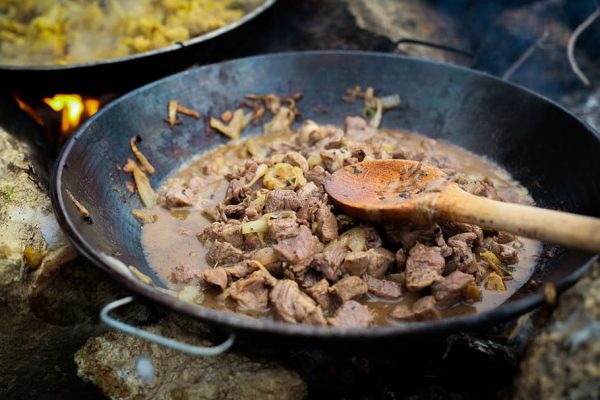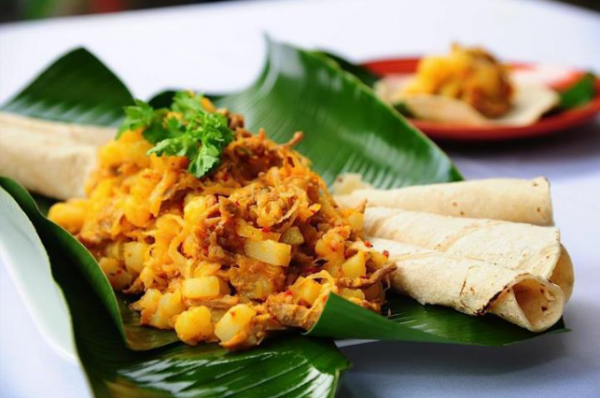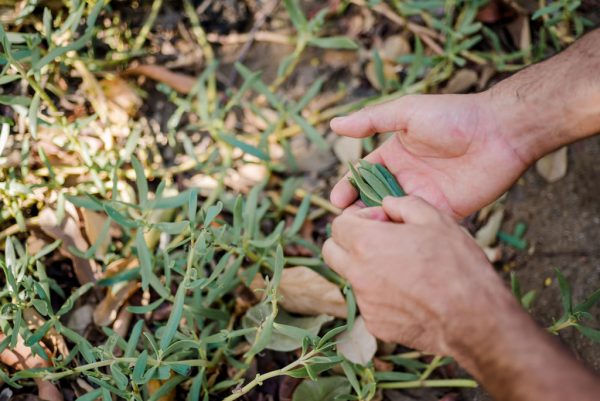Friday, December 27th, 2019.
In this Daily: Picadillo de Turno a Classic Costa Rican Meal to Cook At Home
One of the many ways to embrace a place is through its cooking. For example, a meal out at a local restaurant or at a friend’s home provides a glimpse into the recipes, common ingredients, cooking style, and dining traditions of a place. Another way to embrace this local cooking is by taking it a step further and preparing a traditional dish yourself.
In Costa Rica, home cooked meals for friends and family are a major part of the culinary tradition. As Chef Gilberto Briceño tells it, when he was young there were always people around his grandmother’s home for dinner, and anyone who came to eat was family.
During the month of December in Costa Rica, time off from school for the kids and the arrival of the holidays makes for frequent dinners and time spent together, which comes with a number of different traditional foods.
One of them is picadillo de turno, an easy-to-make home cooked stew made with meats, local root vegetables, and herbs that’s made big enough for anyone who wants to come visit, and is usually served with handmade corn tortillas. Below, find a local preparation of picadillo de turno.
 Picadillo de turno, a Costa Rican staple during the month of December | PC: Commons
Picadillo de turno, a Costa Rican staple during the month of December | PC: Commons
A Homestyle Recipe for Picadillo de Turno
First and foremost, Picadillo de Turno is an approximate science, a communal dish with a little bit of this and a little bit of that, which is prepared from what’s in the pantry, in the garden, and fresh at the market. From there, preparation for the dish primarily goes through three phases: preparing the protein, stewing the root vegetables, and finally recombining with rice into the picadillo.
 The first phase of a picadillo is to prepare the protein in the juices of the flavor vegetables | PC: Commons
The first phase of a picadillo is to prepare the protein in the juices of the flavor vegetables | PC: Commons
Preparing the Protein
Almost all steps of preparing Picadillo de Turno are done in a single pot. The dish is most often made with beef, but the protein can be chicken, pork, fish, tofu, jack fruit, or one of any other options, which can be minced or cut into bite-sized chunks depending on preference. The chosen protein is placed in the pot with the “flavor” ingredients, which usually include thyme, oregano, celery, garlic, sweet pepper, onion, and cilantro.
On top of the protein and flavor ingredients are the seasonings, usually a little salt, achiote, cumin and whole coriander seeds, which are then cooked on low heat until prepared rare or the protein’s alternative.
Stewing the Vegetables
After the protein has been prepared to rare or its alternative, it should be set aside in a small bowl and covered for later. Then, place the diced potatoes, beets, carrots, green papaya, or any other hearty vegetables in the pot. There should be enough liquid left in the pan afterward to cover this round of vegetables, but if there’s not, feel free to add more flavor vegetables, a broth, or simply more water and seasoning to the mixture until all of the root vegetables are covered.
Bring the mixture to a boil, then reduce heat to a simmer until the root vegetables are tender.
During this phase, prepare a pot of rice on the side, aiming for about a one to one ratio between rice and stew.
 The picadillo de turno is then mixed with rice, and often served on a fresh-grilled tortillas | PC: Commons
The picadillo de turno is then mixed with rice, and often served on a fresh-grilled tortillas | PC: Commons
Finishing the Picadillo
Towards the end of the stewing of the root vegetables, recombine the meat into the stew and bring the stew back to a simmer, adding in any extra spices and vegetables like cumin, coriander, salt, pepper, more celery, and sweet pepper until the mixture has been seasoned to taste.
Then, mix the pot of rice and the stew, aiming for the rice to evenly absorb almost all of the juice from the stew, leaving behind the root vegetables, meat, and rice saturated with all of the flavor of the stew. Some families prefer picadillo de turno with some extra stew left behind while others prefer it slightly drier, so feel free to mix and match to preference.
Once mixed together, the picadillo is topped with home garden herbs like thyme, parsley, coriander, and spices, and then usually served corn tortillas, warmed, grilled, and slightly buttered in the pan. Individual sauces and seasonings, like a salsa picante or salsa lizano, are put on individually.
 One of the staples of picadillos de turnos are the fact that they're made with what's available, like foraged herbs
One of the staples of picadillos de turnos are the fact that they're made with what's available, like foraged herbs
Adding Your Own Twist
As Chef Briceño describes, picadillos de turno are more of a style of food than a specific recipe. There are three main phases of preparation, but the ingredients and the amounts are flexible to what’s local, what’s fresh, and what can be found out in the garden. For example, when making picadillos in Las Catalinas, Chef Briceño likes to add beach purslane that he’s foraged from the area around town, a few sweet potatoes, and then top the dish with his favorite blackberry rock salt.
To make your own picadillos de turno, part of the fun is finding the right mixture of ingredients. After all, slight adjustments of countless picadillos are how each family recipe came to be.
For the first one, the following are a good base:
- 1 kilo of chosen protein
- 2 kilos of root vegetables (potatoes, carrots, sweet potatoes, beets -- diced)
- 1 yellow onion
- 2 sticks of celery
- 2 sweet peppers (diced)
- 2 cloves of garlic (diced)
- 2 sprigs of thyme
- 2 sprigs of coriander
- 4 cups of rice
- Salt, pepper, and spices to taste
- Vegetable broth (as needed)
Which can then take on an identity of its own with any local herbs, spices, or sauces in the pantry.
To try cooking picadillo de turno while you’re in town, reach out to concierge. They can provide these items and any other ingredients on your grocery list to your door, and leave the fun of exploring the flavors of this Costa Rican classics to you.
[maxbutton id="1" url="https://cta-redirect.hubspot.com/cta/redirect/4917861/57a68699-ed5d-4cbc-bd15-a3622b8b95d2" text="Try Picadillo de Turno" ]